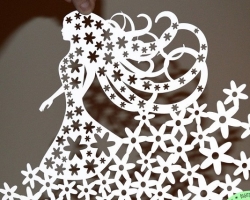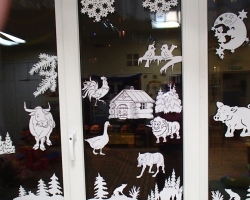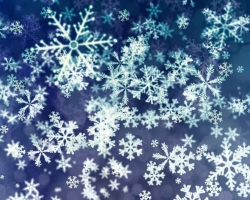The article will talk about the secrets of creating flowers using the quilling technique.
Content
- How to make beautiful flowers in the style of quilling?
- Quilling: Dandelions, photos
- Quilling: Cloves, photos
- Quilling: daisies, photos
- Tulips using Quilling technique, master class
- Video: tulips using Quilling technique, master class
- Lilies in quilling technique, master class
- Video: quilling lilies, master class
- Quilling Roses
- Video: Quilling roses, master class
- How to do Narcissus using Quilling technique? Master Class
- Video: Narcissus using Quilling technique, master class
- Quilling: Mimosa, master class
- Video: Mimosa using Quilling technique, master class
- Quilling bouquet
- How to make beautiful flowers in the quilling technique: tips and reviews
- Video: Quilling for beginners in quilling technique
There are no boundaries for creativity. And for paper creativity - even more so. After all, paper is easily accessible and cheap material, which, moreover, has excellent decorative properties. The modern industry of creativity has created hundreds of types of paper, different colors and textures. One of the modern types of paper creativity is quilling. It originated not so long ago in the West. Quilling is quite simple and everyone can master it.
- The main advantage of Quilling is its simplicity. By learning to create several basic figures, you can make figures of any complexity
- Another advantage is the availability of materials. All you need for quilling is a special paper cut into thin strips, tools and PVA glue
- Quilling paper is already sold in finished form. Quilling masters do not even need to waste time on her workpiece. Such paper has many shades and several sizes
- Quilling opens up wide scope for creativity. To create in this channel you do not need to have in excess of talents
- With the help of decor quilling, you can decorate postcards, albums, notebooks, create separate figures
- Taking a quilling, each master chooses his favorite motives. The easiest and most beautiful motive is flowers

How to make beautiful flowers in the style of quilling?
- You need to start making flowers by thinking out the idea. Make a sketch and outline the location of future colors
- Think about what kind of flowers you will portray. Study the structure of this flower, see the photo of the original on the Internet. Pay attention to the number of petals, leaves, stem length
- Prepare the materials. The first is paper. In order not to cut the paper yourself, buy it in a specialized store. As a rule, it is sold in a set of several colors. Choose the one that will be best suited for your flowers
- Also, prepare the tools and glue PVA. From the tools you will need a tweezer, with which strips of paper will be tightened. If you are a beginner master, purchase a stencil for quilling details. So you will get even figures
- Prepare the workplace so as not to stain the paper ribbons and the basis of PVA glue
- Think about what details the flowers will consist of and how many such details are needed
- It is better to prepare details in advance and not rush. The main thing is to enjoy the process of creativity.
Quilling: Dandelions, photos
Dandelions are a symbol of summer. It has a bright yellow color that will decorate any composition. It will not be difficult to make dandelions.


Quilling: Cloves, photos
Bright cloves can be done separately or add them to the bouquet to other colors. Cloves look strictly and richly at the same time. Combine paper in different colors to achieve the realism of these colors.


Quilling: daisies, photos
Delicate daisies, perhaps the simplest flowers in the quilling technique. They can even make them a beginner. A more experienced master can combine chamomiles with other colors so that the composition looks richer.


Tulips using Quilling technique, master class
- Tulips are bright spring flowers. For them, paper of yellow, red, lilac or pink shades is suitable
- Tulips made using the quilling technique can be decorated with a postcard by March 8 or a notebook. Also, you can make a separate composition or picture
- For tulips you will need paper (for buds, stems and leaves), thin tweezers, scissors, PVA glue and, if possible, stencil
- It is necessary to think through what shape the bud will be. The simplest shape is in the form of a crescent. However, tulips in this case will turn out only schematic
- Think about what the background will be for future tulips. It should not be brighter than the flower buds themselves

Video: tulips using Quilling technique, master class
Lilies in quilling technique, master class
- Lilies come in various colors: white, pink yellow or orange
- Despite the fact that the most suitable color is white, it is better not to work with beginners with it. White paper is very marking. If the skills of working with materials have not formed, the beginning master simply stains white paper
- If you still decide to work with white quilling paper, wait for the complete drying of the elements. Otherwise, the green color of the leaves can stain white petals
- Quilling lilies can be flat or voluminous. From them you can create a wonderful composition to decorate the interior. Lilies go well with roses

Video: quilling lilies, master class
Quilling Roses
- Roses are not easy to manufacture. Therefore, it is better for beginners to start with the manufacture of other colors
- Most often, roses are not made of Roll's standard figure. For a rose, the paper is twisted so that the flat parts climb out, imitating the flower petals
- Roses can be made flat or voluminous
- The best colors for roses are red, pink and white. Experienced craftsmen can combine several shades so that the rose looks realistic (darker inside and lighter outside)

Video: Quilling roses, master class
How to do Narcissus using Quilling technique? Master Class
- Pay attention to the structure of the daffodils: these flowers have a head, which is directed down. Also, they have petals and the inner bud of the bell
- So that the daffodil is like itself, it is better to make it voluminous. Then, all the details of the flower will be noticeable
- Narcissus come in two types: white with a delicate yellow middle and yellow with a bright yellow middle
- Often, in order to simplify the manufacture of daffodils, they are made not from the side, but on top. That is, it seems that their buds are aimed at the viewer

Video: Narcissus using Quilling technique, master class
Quilling: Mimosa, master class
- Mimosa has many tiny flowerpot flowers and sharp leaves. For its manufacture, you will need bright yellow and dark green paper
- Pay attention to the flowers of mimosa. They are fluffy. This effect can be achieved by finely cutting strips of paper before twisting. Then, the cut parts are enough to squeeze
- Mimosa can be combined with other spring colors: crocuses and tulips

Video: Mimosa using Quilling technique, master class
Quilling bouquet
The best thing in quilling is a huge creative potential. And the beauty of nature is so immense that they can be embodied forever. Having mastered the skills of creating individual colors, the master can begin to make bouquets. It will already require not only technical skills, but also a sense of style.

How to make beautiful flowers in the quilling technique: tips and reviews
- Quilling is a very painstaking type of creativity. Only after acquiring the skills of the figure will be more quickly. Therefore, be patient
- Accuracy is the main factor for obtaining beautiful compositions. No matter how ingenious the idea is, in a dirty or uneven form it will be simply impossible to look at it
- Paper parts are very small, so prepare a place to work in advance
- Wait for the part to complete the details before attaching it to the basis
- Do not put a lot of PVA glue. Even a small amount of it glues paper well
- Do not skimp on quilling tools. This will provide you with easier work and even details
- Take your time, stretch the pleasure of creating your masterpiece

Do not limit yourself to the creation of only one motive. Look for those that you will like the most.
Video: Quilling for beginners in quilling technique







